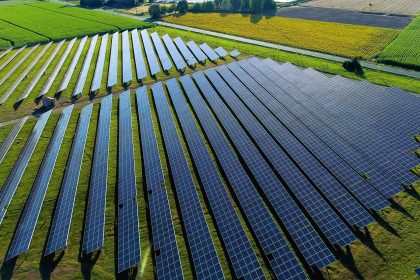
The Center for Agriculture and Food Systems at Vermont Law School is pleased to share the new Farm and Energy Initiative (FEI) website, a collaboration with the Institute for Energy and the Environment.
 The open-access resource helps farmers, researchers, and policymakers promote sustainable energy use in agriculture. It includes toolkits and information in three main sections:
The open-access resource helps farmers, researchers, and policymakers promote sustainable energy use in agriculture. It includes toolkits and information in three main sections:
- The Farmland Solar Policy Project. Thoughtful state solar siting policies can help build a renewable energy infrastructure while preserving farmland and improving farm sustainability. The FEI compiled and analyzed state policies nationwide, curating the information in an easy-to-navigate format. A Policy Design Toolkit helps policymakers shape solar regulations that work for their states and communities.
- Biogas and Organic Waste Management Project. The FEI identifies policies and business models promoting the economically viable and sustainable use of anaerobic digestion in agriculture. Never heard of anaerobic digestion? A handy FAQ and a podcast mini-series provides an introduction to the technology, discussing the benefits and drawbacks of using digesters to recycle organic waste into renewable energy and fertilizer.
- Healthy Soils Law Project. How can state governments develop policies that support environmental stewardship in agriculture? Explore our research on soil management, ecological agriculture, soil health and the law. Or, dig a little deeper with our report on the benefits of public investment in Vermont soil conservation and our searchable literature review organizing existing research on compensation for ecosystem services.
Visit farmandenergyinitiative.org to access all of this and more. Feel free to share the website widely, and just let us know if you have any feedback or questions.
This project is directed by Assistant Professor Genevieve Byrne of VLS’s Institute for Energy and the Environment, and funded with a grant from the National Agricultural Library, U.S. Department of Agriculture.




